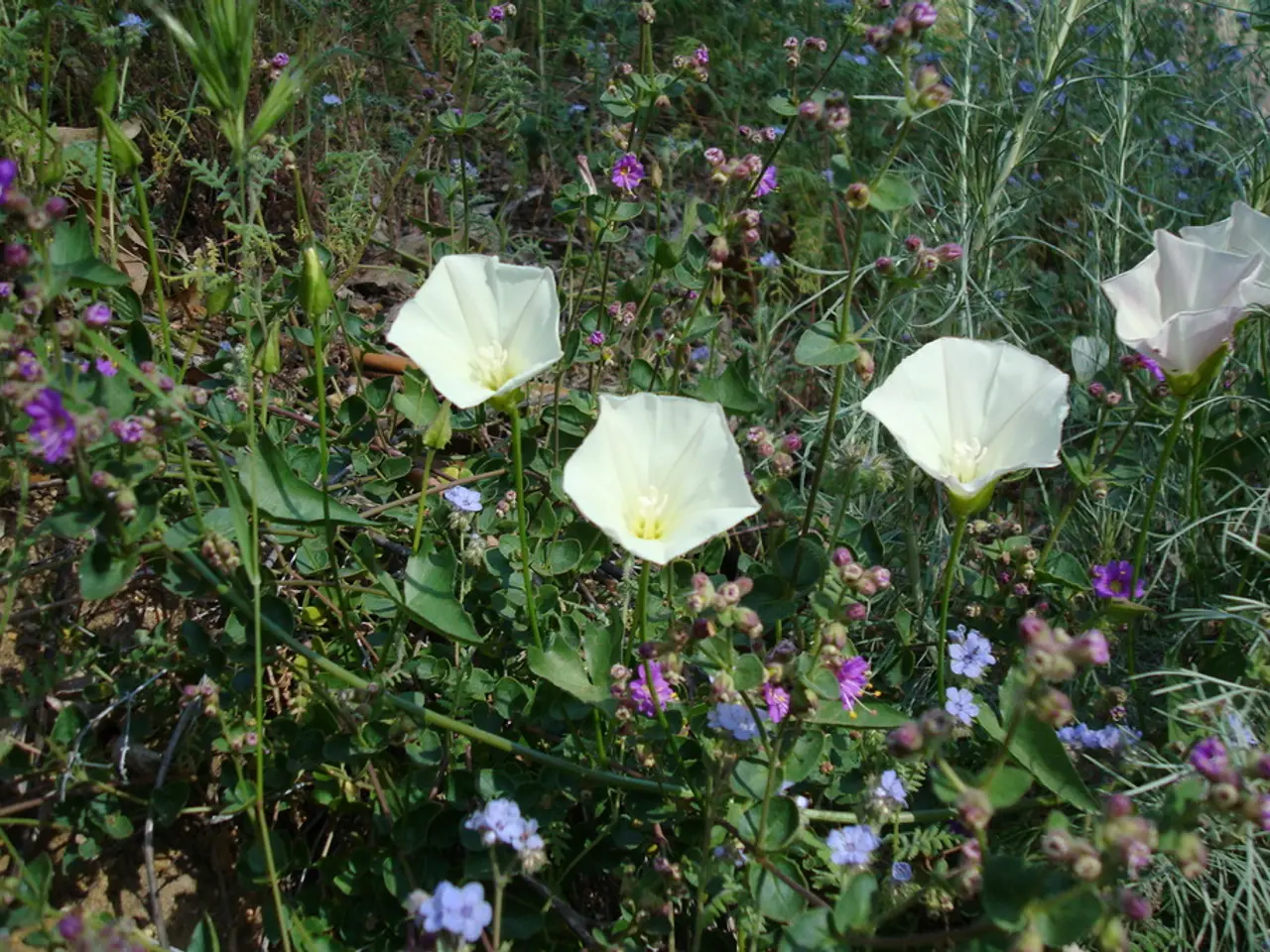Invasive Garden Plants: A Gardening Expert Warns About Five Common Species and Suggests Alternatives
Invasive Plants: A Gardener's Guide to Choosing Less Harmful Alternatives
Gardeners across the globe are being urged to be mindful of the plants they choose, as certain species can cause significant ecological harm when they invade native habitats. Here, we highlight some invasive plants and suggest suitable, less invasive alternatives for various regions.
Lily of the Valley (Convallaria majalis)
In zones 4 to 8, particularly in wet, shady, or mild climates, the common lily of the valley can spread aggressively via persistent roots, displacing native plants. A less aggressive alternative is the pink-flowering variety (Convallaria majalis var. rosea), which offers a similar aesthetic appeal.
Tree of Heaven (Ailanthus altissima), Burning Bush (Euonymus alatus), Japanese Honeysuckle (Lonicera japonica)
These plants can be invasive in various zones, growing uncontrollably outside their native ranges.
Barberry (Berberis thunbergii)
Besides invasiveness, barberry hosts ticks carrying Lyme disease. Native shrubs such as Ninebark (Physocarpus opulifolius), Winterberry (Ilex verticillata), Dwarf Witchalder (Fothergilla gardenii), Sweetspire, and New Jersey Tea provide wildlife benefits and reduce tick habitat.
Callery or Bradford Pear Tree (Pyrus calleryana)
Widely planted street trees, callery pear trees have colonized woodlands and open fields, displacing native species. Native trees/shrubs such as Serviceberries (Amelanchier species) and Eastern Redbuds (Cercis canadensis) offer attractive blooms and edible fruit, making them suitable alternatives.
Japanese Stiltgrass (Microstegium vimineum)
This invasive grass prefers damp, shady or disturbed areas but tolerates many conditions. Diverse native grasses and sedges support native ecosystems and outcompete invasive grasses.
Chinese Privet & European Privet (Ligustrum sinense & Ligustrum vulgare)
Found in moist, well-drained wooded riparian zones, these privet species can be invasive in certain regions. Native shrubs such as Spicebush (Lindera benzoin) or American Holly (Ilex opaca) provide better wildlife support and are less invasive.
Bamboo
Extremely invasive due to its hardiness and fast growth, bamboo can cause significant ecological harm. Gardeners should verify whether bamboo is invasive in their specific region before planting.
When choosing plants, it's essential to consider their impact on local ecosystems. Opt for native plants where possible, as they tend to be less aggressive and support local ecosystems better. Always verify whether a plant is invasive in your specific region or hardiness zone before planting, and be mindful of ecological impacts like supporting pollinators and preventing tick habitats. Management of invasives often requires persistent removal efforts; prevention is most effective.
After considering the ecological impact, it's advisable for gardeners to opt for less invasive alternatives such as the pink-flowering lily of the valley (Convallaria majalis var. rosea) instead of the common lily of the valley. When choosing garden ideas, home-and-garden enthusiasts should prioritize native plants that support local ecosystems, like Ninebark (Physocarpus opulifolius) and Eastern Redbuds (Cercis canadensis), over invasive plants such as Barberry (Berberis thunbergii) and Chinese Privet (Ligustrum sinense). Gardening practices that prioritize native plants and minimize the use of invasive species contribute to a healthy, sustainable lifestyle.




